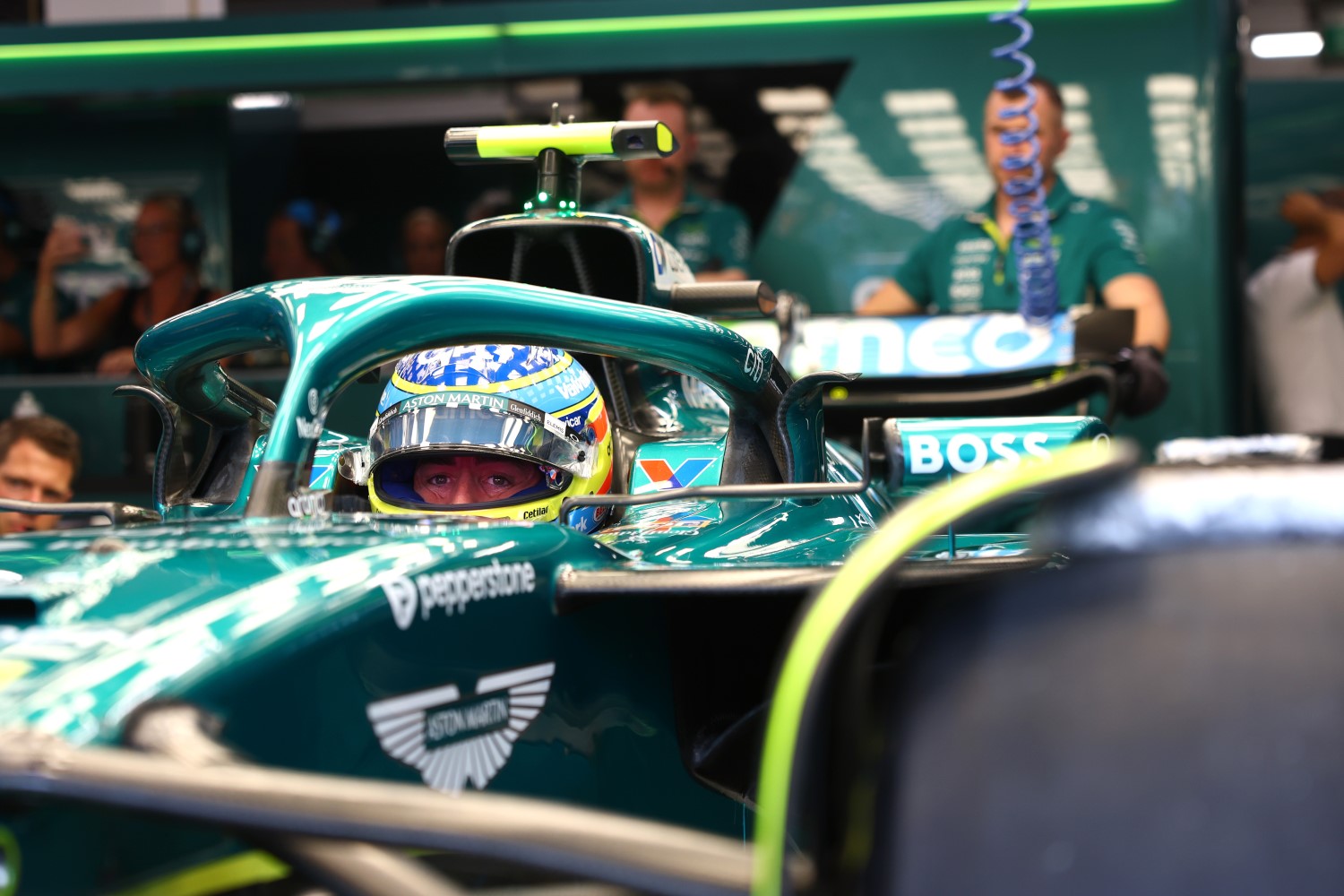Formula 1 News: Alonso to wear cooling vest at ‘heat hazard’ GP
(GMM) This weekend’s Singapore GP has been designated Formula 1’s first official ‘heat hazard’ race, with the FIA moving to address driver safety in extreme conditions.
The decision follows the infamous Singapore edition two years ago, when several drivers fainted or vomited in their cockpits amid brutal heat and humidity. The new classification allows the FIA to mandate innovative cooling measures – including a liquid-filled vest system that drivers can wear under their fireproof overalls.
Related Article: Formula 1 News: FIA triggers heat alert in Singapore
For now, the vests remain voluntary, but teams must run ballast in every car to compensate for those who choose to use them.
Fernando Alonso (pictured above) confirmed he will race with the system for the first time on Sunday. “I’ve been using it in a couple of free practice sessions, basically in preparation for this race or even for Qatar.
“I think I plan to use it on Sunday,” he told reporters.
“The jersey itself, with the whole system in place, is a little thicker, so it’s less comfortable. It’s a counterbalance – it’s less comfortable to drive, but it’s a little cooler. Let’s see how it goes on Sunday.”
The Aston Martin driver said he had not experienced reliability issues. “It should be fine for the entire race. At least during an hour of free practice, it continues to work the same from minute one to minute sixtieth,” Alonso explained.
Carlos Sainz Jr., who trialed the vest in Saudi Arabia, has had less success with the vest but is bracing for a tough weekend in Singapore.
“I think it might be 29 degrees, but the humidity is felt inside the car and outside, which creates a much greater perception of heat,” he said. “Humidity alone isn’t so bad if it’s not too hot. But when combined, it’s a different story.”
The Williams driver admits the cooling technology is still imperfect. “If it breaks or doesn’t work, I’m not worried. I’ll run the race and start fresh, as always, but if it works, even better, because that way you suffer less.
“It seems like something that needs refining and working to be completely optimal.”
Meanwhile, Gabriel Bortoleto prepared in an unusual way. “I got used to the heat at home in Monte Carlo with 500 laps on the simulator,” he smiled. “Instead of wearing a t-shirt as usual, I wore two thick jackets at night to simulate the heat.”
—
The Good: Cooling vests help manage heat stress. Kevin Magnussen noted, “In the hottest races, it does make a difference in how you feel,” though he questioned their impact on performance. George Russell, who pushed for their adoption as a GPDA director, said, “It’s a positive. I think it’s a good step for driver safety and health.” Pierre Gasly highlighted their role in extreme conditions, stating, “It was very welcome in Singapore, where you’re basically in a 60-degree oven for two hours.” Nico Hulkenberg added, “In the extreme races, like Qatar last year or Singapore, it’s definitely a help.”
The Bad: The vests add weight and bulk, which can hinder performance and comfort. Magnussen explained, “The weight is not ideal. You’re adding maybe a couple of kilos to the overall weight.” Gasly noted logistical challenges, saying, “It’s another layer. You need to keep it in the fridge, so you need to get to the track earlier, and it’s another thing to put on, which makes things a bit more tedious.” Fernando Alonso, who dislikes the vests, remarked, “I don’t use it when it’s not mandatory. When you put the ice on your body, it’s not a nice feeling, and it’s a little bit more weight. I don’t feel any benefits.” Zhou Guanyu echoed this, saying, “It’s not the most comfortable thing to put on. You put ice inside, so it’s freezing when you put it on, and after a few laps, it’s not cooling any more, so it’s just extra weight.”
The Ugly: Practical issues include discomfort and limited cooling duration. Russell admitted, “It’s not the most comfortable thing to wear. The vest doesn’t breathe at all, so you’re sweating underneath it, and it’s a bit like wearing a wetsuit.” He also noted maintenance challenges, stating, “The biggest negative is they’re a bit tough to deal with. You’ve got to keep topping them up with ice, and if you don’t store them correctly, they get a bit smelly.” Lando Norris highlighted their short-lived effect, saying, “The cooling vests don’t stay cold for long, maybe 10-15 minutes, but it’s better than nothing.” Sergio Perez pointed out fit issues, noting, “Sometimes they don’t fit perfectly, so you’re a bit uncomfortable in the car.”
